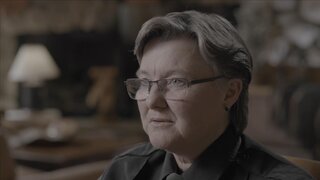Create a free profile to get unlimited access to exclusive videos, breaking news, sweepstakes, and more!
Handyman Convicted Of Murdering Landlady By Placing Her Upside Down In A Wishing Well While She Was Still Alive
The 81-year-old woman's hands had been bound with duct tape.

Murders A-Z is a collection of true crime stories that take an in-depth look at both little-known and famous murders throughout history.
In July of 2008, a father and his teenage daughter were walking home from dinner in German Village, Ohio, just south of Columbus, when the father detected a horrible smell emanating from a wishing well in the backyard of an abandoned home. Inside: the dead body of Alyce Seff. Her head had been wrapped in cloth and her hands bound with duct tape.
Seff’s tragic story was the subject of a recent episode of Oxygen's "Buried In The Backyard," airing Sundays at 7/6c.
Police discovered an array of Seff’s belongings near the wishing well, including her driver's license. An autopsy revealed that she died from positional asphyxiation—after being placed upside down inside the well while still alive.
Seff was the owner of several properties, and investigators learned from some of her tenants that she often kept large sums of money on her. Video surveillance of her at a local tool store also showed Alyce taking wads of cash out of her pockets.
After obtaining her cell phone records, detectives discovered calls were being made late at night, when Seff usually did not use her phone, and to numbers she had never dialed. A homeless man named Charles Greene had been placing the calls, investigators discovered.
While searching for Greene, who was nowhere to be found, Seff’s car showed up in South Columbus. It hadn’t been seen since the day she had been killed. No prints were found in the car, but a small drop of blood was discovered on the driver's side door and collected as possible DNA evidence.
Two months after Seff’s death, there was activity on her credit card. Detectives tracked down video of two women shopping with the card. Investigators had already spoken with one of the women, Brenda Greathouse.
When they spoke with her again, Brenda said Charles Greene was a friend and he allowed her to use the credit card. There hadn’t seemed to be any issue with the name on the card.
Years passed without any sign of Charles Greene. No one knew his whereabouts.
Then, three years after Alyce Seff's murder the detectives learned that Charles Greene had been arrested and put in jail just a half a mile from their office.
Greene said he had worked with Seff as a handyman, but insisted he didn’t know anything about the murder. Detectives asked Greene for a DNA sample, which he gave, and concluded that the blood drop from inside the car was a match.
But even with the DNA, the prosecution had only circumstantial evidence and could not place Greene at the scene of the crime.
Investigators went back to Seff's car, which was still impounded, and found a receipt book with a receipt for Charles Greene indicating a payment to him on July 1, 2008, four days before her death. This contradicted Greene’s statements.
Investigators also went back to the call log and discovered the last call Seff received before she died was from the same number for Charles Greene that had been written on the receipt from July 1, 2008.
This now placed Charles Greene in connection with Alyce Seff on the day of and hours leading up to her murder.
On January 6, 2017, almost nine years after her murder, Charles Greene was charged with aggravated murder, kidnapping and aggravated assault. The trial lasted seven days, and Greene was found guilty of murder, aggravated robbery and kidnapping, according to The Columbus Dispatch.
He was sentenced to 15 years to life. For more stories like this watch "Buried In The Backyard," Sundays at 7/6c on Oxygen.


















